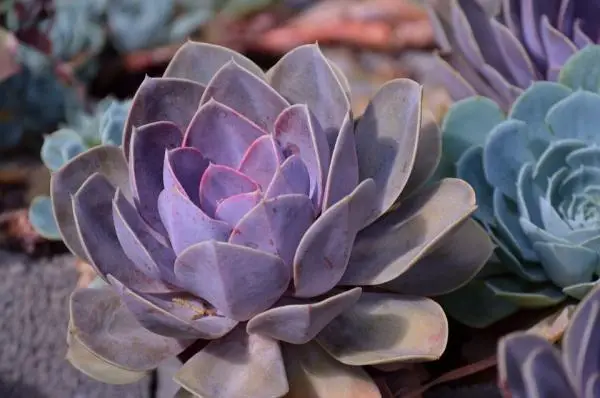The use of cacti and succulents in the decoration of our homes is becoming more and more common. Even less experienced gardeners find that these hardy plants require very little care and that they can beautify any home with their distinctive and striking shapes with little effort. In this regard, the colorful succulents deserve special mention, which with their bright tones attract attention and give a unique touch to any corner.
However, making succulents change color is not so easy and requires a little more experience and, above all, attention and care. If you want to learn how to change succulents in color and grow them , keep reading this article.
How are colored succulents made
The process of changing the color of a succulent is commonly called ” stressing the plant .” The first thing we must clarify is that, although it is true that when the process is carried out properly and carefully it does not entail any serious damage to the plant, if conditions get out of control it can damage it or even kill it. . For this reason, it is very important to emphasize that you should not try to change the color of your succulents if you will not have time to properly monitor them.
That said, to make succulents change color, what is usually done is to replicate the conditions of their natural habitats, which are almost always more extreme. In this way, for a succulent to turn red, we must stimulate its production of anthocyanins, which help protect it against excess sun exposure. Therefore, it will be enough to expose it to the intense sun for more hours a day. However, you must be careful not to go overboard, in addition to ensuring that the plant has the necessary water and nutrients.
Similarly, if the temperature drops beyond normal, some succulents will turn purple or blue . This can be very difficult to achieve in tropical or warm temperatures, but you should avoid overcooling the plant in artificial or drastic ways.
For this reason, it is common to see green succulents in the warm months, which turn red in summer or cold tones in winter. Drought and poor soils are also a cause of color change in them, but we advise against this practice as it is dangerous for plants.
Lastly, fertilization will prevent your succulents from changing color, so some prefer not to fertilize while the stressing process lasts. Anyway, do not hesitate to fertilize them if it seems that their health is in danger, since this should always be your main priority, regardless of the color they take.

How to grow colorful succulents – care
Here’s a practical care guide for growing colorful succulents:
Stress in colorful succulents
As we just said, stressing succulents can become a risky practice for your plants. To make sure you don’t harm their health, never keep them stressed all year long, you only have to stress them out for a few months . In addition, you must pay close attention to the condition of the plants on a daily basis. If you see that the leaves are wrinkled, appear burned or their tips or edges become black and dry, it is that you are damaging your plants by excessive stress. In that case, keep them back in as favorable condition as you can.
Irrigation and substrate
Otherwise, colored succulents share the need of any other succulent. They require soils with very good drainage , if possible a mixed substrate and special for this type of plants, as well as specific fertilizers, which are usually applied in smaller quantities.
Excess moisture in succulents
Its main enemy is still excess water or humidity, which can cause rotting of its leaves or roots, so never overwater them and do so only when their substrate or soil is visibly dry. If you ever detect excess moisture in your plant, you can put it in the sun for several hours and even change some of the soil and improve drainage in this process.
Also, if you really like these types of plants and want to grow them and have different ones or even start a business to supply them to gardening stores and similar places.
Types of colored succulents
Not all succulents can change color. In most cases, if you stress them without having informed yourself before, it is most likely that you will only be able to weaken the plant without changing its color.
Here are some succulents that change color under stressful conditions:
- Kalanchoes
- Euphorbias
- Sedums
- Aeonium
- Echeverias
- Crassulas
- Aloes
Remember that the health of the plant is always the first thing , so pay close attention to all the signals it gives and interrupt the stressing process at the first sign of damage or weakening.


